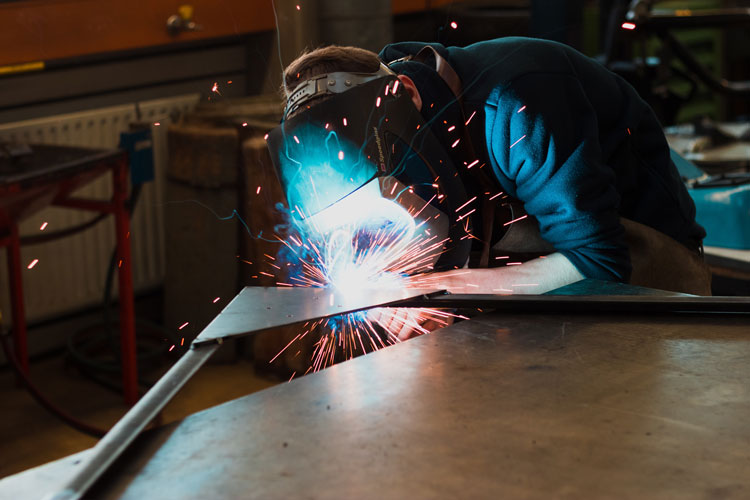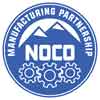A mother of a teenage boy sits weeping at a Parent-Teacher Association (PTA) meeting. Why is she sobbing uncontrollably? Has her son been suspended from school? Has he committed a crime while off school grounds? Is her child sick? Fortunately, the teenage boy is healthy and has always avoided trouble. She is despondent because her son won’t consider attending college, and he’s determined to become a welder after graduating from high school. Unfortunately, this isn’t a concocted story. Tim Stephens, a consulting expert technologist with a focus on metal fabrication at The Die Guy, LLC, observed this mother’s heartache while at this gathering of parents and teachers. Meanwhile, manufacturing jobs are reliable, pay well, and in need of people like this teenager. So, the question is: How can rewarding careers in manufacturing become destigmatized for the betterment of the industry and America? Although there are many answers, one potential solution is to promote the expansion of apprenticeship programs across the U.S.
Reinventing the high school curriculum
At many high schools across America, guidance counselors stress that a college degree is the lone gateway to success. Regrettably, that notion is antiquated and simply erroneous. Although starting wages in manufacturing are $15.55 per hour, which is double the minimum federal wage of $7.25 per hour, the sector is expected to have 2.1 million unfilled jobs by 2030. To exacerbate matters, the U.S. Census Bureau reports that nearly 25 percent of the manufacturing workforce is age 55 or older. Consequently, there is a critical need to start introducing young people to careers in manufacturing at the high school level.
“I think the first thing that needs to happen is some kind of marketing campaign that tells concerned parents and ambitious young men and women who are going into high school and coming out of high school that, if your passion is skilled trades, do it,” Stephens, who also led modern stamping technologies deployment and process improvement initiatives at General Electric, said. “If you want to work on a machine, get into CAD/CAM applications, design tools, or become a welder, that’s great! The marketing campaign must make it clear that manufacturing is a viable path. Plus, there is a labor shortage and you are going to do quite well for yourself in terms of earning a good living. I think part of the campaign can come from the federal government. They have a responsibility to tell people that there is a different path and one that won’t require big school loans.”
The impact of COVID-19 on the manufacturing sector
The coronavirus pandemic crippled the U.S. economy and caused it to plunge into recession in February 2020. The Brookings Institution reports that nearly 9.5 million jobs were lost between the onset of the pandemic and February 2021. Thankfully, the economy has rallied, is more robust than it was pre-COVID-19, and economists forecast that the recovery will continue through the remainder of the year and into 2022. Nonetheless, despite the economic upswing, the manufacturing sector has lost approximately 578,000 jobs over the past 18 months. A survey conducted by the National Association of Manufacturers (NAM) found that the ongoing challenges most manufacturers face in attracting, retaining, and upskilling their workforce are likely to persist without a concerted, industry wide effort. Stephens is confident that launching new, quality apprenticeship programs can effectively upskill workers, which would open more opportunities and build a stronger workforce.
“We must rebuild our apprenticeship programs,” Stephens said. “I know that sounds easy, but it’s actually a lot of work. Some smaller companies are worried that, after investing the time and money into apprenticeship programs, young men and women will take the knowledge and experience they gained and seek work somewhere else that offers a few dollars more. That’s why many companies are reluctant to offer bonafide apprenticeship programs. But as finding experienced people becomes increasingly difficult, what alternative do we have? We must replenish our workforce, and we’re running out of time.”

To validate Stephens’ assertions, NAM predicts that the manufacturing skills gap plaguing the U.S. could leave 2.1 million unfulfilled jobs and a loss of $1 trillion by 2030.
Bob Greene is a senior human resource industry analyst at Ascentis. Greene concurred with Stephens and expounded on the benefits of reskilling and upskilling manufacturers, rather than seeking new talent.
“Focusing on reskilling and upskilling workers can help improve productivity and efficiency while keeping costs low, ultimately improving profitability,” Greene told Manufacturing.net. “It is crucial to keep in mind that the turnover rate for manufacturing employees is toward the higher end at 20 percent, so hiring new employees also comes with the risk that they may not remain with the company for long.”
Larry Caschette, the president of Denver-based Metalcraft Industries Inc., agreed with Stephens and Greene. Still, Caschette expressed concern that it may be far more difficult to upskill workers than many onlookers realize.
“Many people think that it’s going to be easy to retrain the under-skilled to become highly skilled manufacturers,” Caschette said. “It’s not going to be easy, at all. Plus, there’s a major assumption that people want to learn new skills and that they are capable of learning new skills.”
How are other countries developing strong manufacturing sectors?
To shift global supply chains away from China, and fix the manufacturing labor shortage in the U.S., President Joe Biden signed an executive order, called “Made in America,” on February 24. Despite being a sensible and potentially game-changing plan, the initiative may be destined to fail because of America’s dearth of skilled manufacturers. To avoid that, and establish an advanced manufacturing workforce, Stephens said that America should look at the efforts of Germany, South Korea, and Taiwan.
“In Germany, they still consider skilled trade workers to be professionals on the same level that our country places professionals like doctors and lawyers,” Stephens said. “In Germany, as much schooling goes into becoming a tool and die maker as does here for ‘elite’ professions. Look at South Korea’s skilled trades programs. The quality of tools they build and the quality of the stampings results in great products. Look no further than Hyundai in Seoul. The fit and finish of their vehicles, which directly results from the quality of stamping die that their skilled tradespeople designed and built, is at audio levels. Lastly, in terms of craftsmanship, Taiwan is phenomenal, and again because of their programs.”
Caschette discussed how U.S. manufacturers can become more competitive and capitalize on Biden’s plan to revitalize the once-booming sector.
“There are many things that can be done to improve the manufacturing industry,” Caschette said. “But among them, we need to capture growth from trade shifts, cultivate flexible supplier ecosystems, guarantee access to capital, invest in industry 4.0 productivity, and concentrate on advancing people, rather than simply saving jobs.”

Reshoring has become a matter of national security
The U.S.-China trade war and COVID-19 have made a few things clear: Relying on foreign manufacturers is a precarious, difficult, and, often, reckless business practice. Even before the coronavirus pandemic, many economists and academics argued America inordinately depended on foreign manufacturers, specifically China, for far too many essential goods. Personal protective equipment, pharmaceutical, and semiconductor manufacturers have faced exceptionally dire supply chain issues since the emergence of COVID-19. Per a survey conducted by Everstream, the pandemic hampered 98 percent of global supply chains and industries that heavily invested in outsourcing, offshoring, and lean manufacturing to reduce costs saw alarming increases in risk. In addition to the problematic issues listed above, an ever-increasing number of Americans want domestically made goods that are regarded as of higher quality. Stephens again lauded South Korea’s ability to produce top-flight products and criticized inferior China-made goods.
“China would rank near the bottom in terms of their craftsmanship abilities,” Stephens said. “As I mentioned, South Korea is the exact opposite of China, with high-quality craftsmanship and simple, yet extremely solid, tools. South Korean workers were taught a simple way to do things, and it’s works.”
Stephens also broached the idea of American-based manufacturing companies partnering with industry trade groups to upskill and reskill U.S. workers.
“To get things started, we need domestic manufacturers to partner with industry trade groups,” Stephens said. “This would need to be tied into some government entity for not only funding but also for marketing purposes. We must upskill our workforce because this has become a matter of national security.”

Biden’s reshoring initiative makes upskilling and reshoring even more critical
Reshoring can, among other benefits, bolster the U.S. economy, balance trade and budget deficits, reduce regulatory compliance risks, dramatically decrease delivery and distribution expenses, lower unemployment rates, improve product quality, and create a more effective and resilient supply chain. However, with a paucity of skilled U.S. manufacturing workers, Biden’s reshoring initiative will prove pointless if companies can’t employ the personnel. So, to help empower the manufacturing workforce, what would Stephens say to the inconsolable mother of the passionate, aspiring welder?
“I would tell her I could make one phone call and help him secure a highly lucrative welding position,” Stephens said. “While his peers are spending $100,000 to get a college education, he’ll be earning good money. Welding is his passion and dream. We can turn his passion into ambition and a brilliant career, and help our country.”
Metalcraft is always looking for talented manufacturers
Metalcraft Industries Inc., a metalworking firm that offers CNC machining services, precision sheet metal fabrication, metal stamping, contract manufacturing, and a vast array of post-production services all under one roof, strongly endorses reshoring, upskilling, and reskilling efforts. Whether you’re a recent high school graduate or an experienced manufacturer, we are growing and have openings that may be ideal for you. Contact us today so we can discuss your future.






